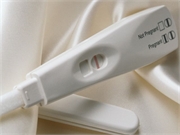Birth rate increased for women aged 35 to 44 years, decreased 7 percent among those aged 15 to 19
MONDAY, Dec. 2, 2019 (HealthDay News) — The general fertility rate declined to 59.1 births per 1,000 women aged 15 to 44 years in 2018 in the United States, according to a study published online Nov. 27 in the National Health Statistics Reports, a publication from the U.S. Centers for Disease Control and Prevention.
Joyce A. Martin, M.P.H., from the National Center for Health Statistics in Hyattsville, Maryland, and colleagues present descriptive tabulations of data reported on birth certificates of the 3.79 million births that occurred in 2018.
The researchers found that in 2018, 3,791,712 births were registered in the United States, which was a 2 percent reduction from 2017. The general fertility rate declined from 2017 to 59.1 births per 1,000 women aged 15 to 44 years. In 2018, there was a 7 percent decrease in the birth rate for those aged 15 to 19 years. In addition, birth rates declined for women aged 20 to 34 and increased for those aged 35 to 44 years. In 2018, the total fertility rate decreased to 1,729.5 births per 1,000 women. From 2017 to 2018, there was a decrease in birth rates for both married and unmarried women.
Following an increase in 2017, in 2018, the cesarean delivery rate decreased to 31.9 percent. For the fourth straight year, the preterm birth rate increased to 10.02 percent in 2018; there was no change noted in the rate of low birth weight (8.28 percent). In 2018, twin, triplet, and high-order multiple birth rates declined.
Copyright © 2019 HealthDay. All rights reserved.








